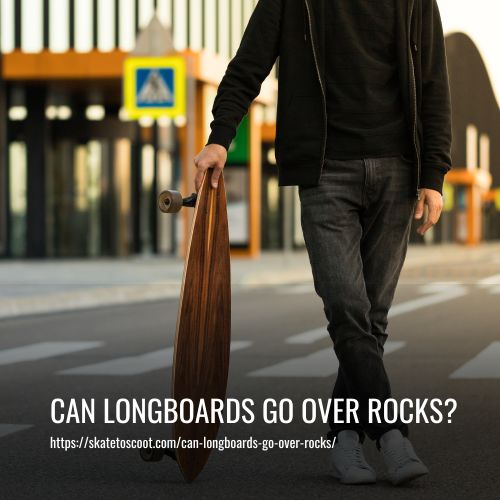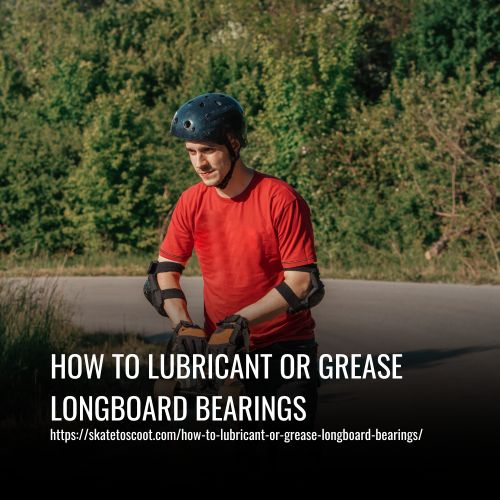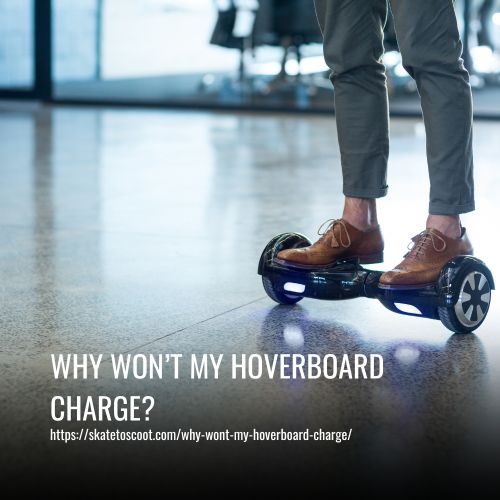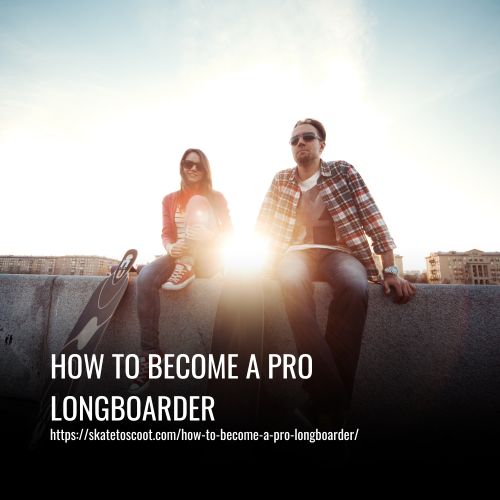As an Amazon Associate we earn from qualifying purchases.
Yes, longboards can go over rocks, but it depends on the size and type of rocks. Most longboards with softer wheels in the range of 65-70mm can roll over small rocks, stones, and pebbles without any issues. For example, boards like the Loaded Omakase, Loaded Poke, or Landyachtz pintail are designed to handle rougher terrains and can easily roll over small rocks without causing discomfort for the rider.
However, it is important to note that this applies only to smaller rocks and not larger or sharper ones. Trying to roll over a 3″ high sharp rock, for instance, can result in accidents unless you have monster truck-like wheels. In such cases, if you’re into heavy off-roading, it is better to opt for mountainboards or all-terrain skateboards specifically designed for that purpose, such as the MBS Mountainboard.
These boards are built to handle rough and uneven terrains, including rocky surfaces. Overall, while longboards are capable of handling smaller rocks, it is important to be mindful of the size and type of rocks you encounter during your ride.

Can You Longboard On Rough Roads?
Longboards are designed to handle rough roads and uneven surfaces more effectively than street skateboards. One of the main reasons is the use of larger and softer wheels, typically with a diameter of 60 to 75mm and a duro rating of 77A to 80A. These softer wheels provide a smoother ride by absorbing more of the impact from rough terrains, offering a more comfortable riding experience.
Additionally, longboard decks are designed to accommodate these larger wheels. They often have wheel cutouts, wheel wells, or wheel flares to provide ample clearance for the wheels to prevent “wheel bite” issues. Longboards also have larger and wider decks compared to cruiser or street decks. This larger deck size allows for better stability and maneuverability on rough roads.
Are Longboards Good On Gravel?
Longboards are not typically designed for off-road or rough terrain riding, including heavy gravel surfaces. However, larger longboards with big wheels can handle light and relatively short gravel sections on roads. It’s important to keep certain things in mind when riding a longboard on gravel.
Firstly, it is recommended to steer the longboard straight ahead when crossing gravel, avoiding any sharp turns. Turning can cause the board to skid out of control on a loose surface.
Secondly, maintaining a decent speed while riding on gravel is crucial. Slowing down too much can result in gravel getting stuck under the wheels, potentially bringing the longboard to a sudden stop.
It’s important to note that longboards are primarily designed for smoother surfaces and are better suited for street skating and cruising on paved roads. For a more comfortable and smooth riding experience on rough terrains or uneven surfaces, longboards with softer wheels and larger wheel sizes might be more suitable.
Skateboard vs Cruiser vs Longboard for Rough Roads
When it comes to navigating rough roads and surfaces, choosing the right type of skateboard or longboard can make a big difference in your riding experience.
If you primarily cruise and commute on rough pavement, a drop-through longboard may be your best bet. These longboards have cutout shapes and can run larger wheels, up to 80mm in size. They also have a lower riding position and longer wheelbases, which provide stability and make rolling over cracks and bumps easier.
On the other hand, if you prefer something more portable and nimble for sidewalks and narrow streets, a cruiser in the 30-34″ range may be more suitable. These cruisers typically allow for 65-70mm wheels, possibly with added risers to reduce wheel bite. The added width of a cruiser deck provides more comfort around potholes, while deeper wheel wells and wheel flares ensure better wheel clearance.
For any type of terrain, favorites like the 31″ Coyote or the 34″ Omakase are great cruiser options. When set up with wheels like Orangatang 70mm 4Prez or Stimulus, these cruisers can comfortably handle rough roads and surfaces.
In contrast, street decks and mini-cruisers (26″ or less) usually can’t accommodate large 70+mm wheels without adding significant riser pads, and even then, wheelbase may still occur. Similarly, large pintails may also experience wheel bite in the front due to deck width. Penny mini-cruisers, however, with their narrow decks, can sometimes handle 70mm wheels due to better wheel clearance.
How To Go Over Bumps On A Longboard?
Going over bumps on a longboard can be a challenge, but with the right technique, you can navigate rough terrain smoothly and safely. Here’s a step-by-step guide on how to go over bumps on a longboard:
- Lock Your Knees and Hold On Tight: To maintain stability, lock your knees and firmly grip the board with your hands.
- Lean Forward and Push Off: As you approach the bump, lean your body forward and push off the ground with your feet. Keep your upper body as stationary as possible.
- Extend Your Legs and Move Back Onto the Board: When you reach the top of the bump, extend your legs out in front of you while quickly shifting your weight back onto the board’s bottom surface. This will help absorb the impact and maintain balance.
- Stay Balanced and Controlled: Avoid going too fast or too high off the ground. Instead, focus on staying balanced and in control throughout the entire ride. This will minimize the risk of falling or losing control over the board.
It’s important to note that not all longboards are designed for rough terrain. Before attempting to go over bumps, make sure to test your board on a small section of rock or rough surface to ensure that it can handle the terrain. Additionally, wearing protective gear such as a helmet and knee pads can enhance your safety while longboarding.
Longboard Wheels To Go Over Rock
Longboard wheels are an essential component when it comes to going over rocks and other obstacles. While most people may assume that longboards can’t handle rocky terrain due to their size and design, there are ways to overcome this challenge.
One trick is to utilize the truck or a flat surface to push off when encountering smaller rocks or logs. This technique allows the longboard to easily navigate over these obstacles without the need to stop and remove the board. Additionally, some longboards have clearance built into their deck design, which enables them to pass over larger rocks comfortably.
To ensure your longboard is capable of handling rocky terrain, it’s always a good idea to test it out before embarking on a ride. This will help you identify any limitations and make necessary adjustments.
When it comes to selecting longboard wheels for rockier surfaces, there are a few factors to consider. Opt for wheels with a larger diameter as they tend to perform better on rough terrains. Additionally, look for wheels with a softer durometer. Softer wheels provide better shock absorption and grip, allowing for a smoother ride over rocks.
Protective Gear and Safety Precautions When Go Over Rock
Longboarding can be an exhilarating activity, but it’s important to prioritize safety, especially when going over rocks. Here are some essential protective gear and safety precautions to keep in mind:
- Helmet: Always wear a helmet to protect your head from potential injuries in case of a fall or collision. A properly fitting helmet can significantly reduce the risk of head trauma.
- Wrist Guards: Consider wearing wrist guards to protect your wrists from sprains, fractures, or other injuries that can occur during falls. They provide support and stabilization to this vulnerable area.
- Protective Clothing: Wear long pants and sleeves to protect your skin from scrapes and abrasions. Additionally, invest in knee and elbow pads for added protection when riding over rocky terrain.
Safety Precautions:
- Assess Skill Level: Be aware of your riding abilities and limit your excursions to the terrain that matches your skill level. Riding over rocks can be challenging and is more suitable for experienced riders.
- Inspect the Terrain: Before embarking on your ride, inspect the surface for loose rocks, cracks, or any other potential hazards. Survey the area to determine the best path to take to ensure a smoother and safer ride.
- Maintain Equipment: Regularly check your longboard for any damages that may affect its performance, especially wheels that may have worn down. Ensure that all parts, including trucks and bearings, are in good condition.
- Learn Proper Technique: Learning the correct technique for navigating rough terrains, such as distributing your weight properly and maintaining balance, is crucial. Practice controlled movements and adjustments to better handle rocky surfaces.
- Ride Responsibly: Follow traffic rules and adhere to local regulations when riding on roads or public areas. Be considerate of pedestrians and other vehicles sharing the space.
- Stay Alert: Keep an eye out for any obstacles, including rocks, potholes, or cracks in the pavement. Maintain focus and react quickly to avoid potential dangers.
- Stay Hydrated: Maintain proper hydration by carrying a water bottle with you during your ride. Staying hydrated will help you stay alert and avoid fatigue.
- Ride with Others: Consider riding with a friend or joining a longboarding group. Having someone else with you can increase safety, provide support, and offer assistance in case of an emergency.
FAQs
Longboarding is a popular sport enjoyed by many, and if you’re wondering whether longboards can go over rocks, the answer is yes, to some extent. However, it’s important to consider the size of the rocks and the type of longboard you have.
If you come across small rocks, your longboard should be able to ride over them without much trouble. However, if the rocks are larger or if there are other obstacles in the way, it may be challenging for a regular longboard to navigate over them. Some longboard companies offer specific models designed for traversing over rocks, usually featuring wider bases and taller tails for better maneuverability.
Longboards can go over various obstacles, such as pebbles, sticks, or cracks in the pavement. Skaters often employ different techniques to navigate these obstacles. Some skaters use their shoes to create a more stable platform, while others perform tricks using their hands and feet. Longboarding on uneven surfaces or off-road terrains can also be achieved with longboards designed for such purposes, featuring larger wheels and stiffer decks for better stability.
While longboarding can be enjoyable on various surfaces other than pavement, it’s essential to consider the risks involved. Surfaces like gravel, mosaic tiles, and carpets are not designed for skateboarding and can lead to injuries. It’s advisable to stick to smooth and even surfaces to ensure a safer riding experience.
Longboards can handle small rocks on wet roads, but larger rocks or other obstacles may pose a challenge. Some longboard models are specifically designed to navigate obstacles and rough terrains, providing a wider base and taller tail for easier traversal.
Yes, longboarding can be enjoyed in windy conditions. While it may pose a challenge for some, others find it exhilarating. Longboards are designed for versatility and can handle various weather conditions.
Longboarding in the snow is possible with the right precautions and equipment. It is recommended to use longboards with larger wheels suitable for off-road riding. Additionally, wearing appropriate clothing and protective gear, such as knee pads and elbow pads, is essential. Proper maintenance of the board’s bearings and trucks is also necessary for optimal performance in snowy conditions. Being aware of icy patches or slippery spots is crucial to prevent accidents.
Conclusion:
While longboards may not be designed for navigating rocky terrain, with the right technique and a sense of adventure, they can certainly handle a few rocks along the way. So go ahead, embrace the challenge, and let your longboard take you on an exhilarating ride over rocks and beyond.
Remember, the only limits are the ones you set for yourself. So grab your longboard and let the adventure begin!
Amazon and the Amazon logo are trademarks of Amazon.com, Inc, or its affiliates.



